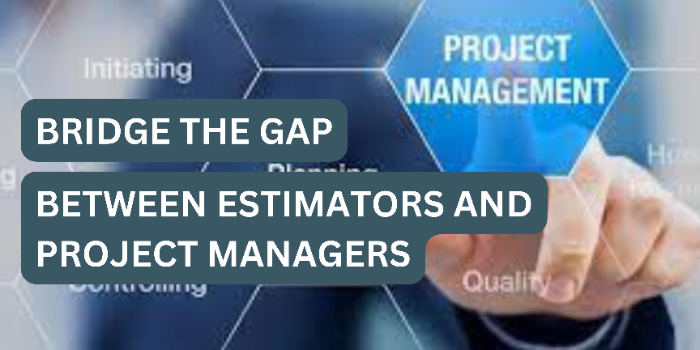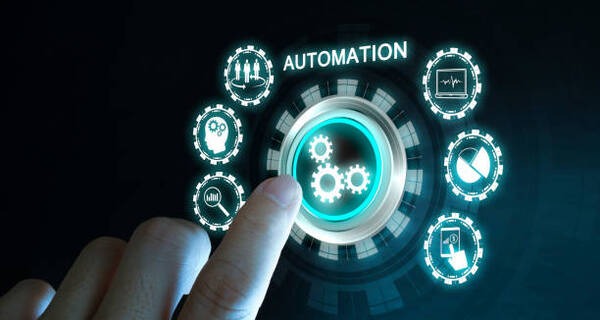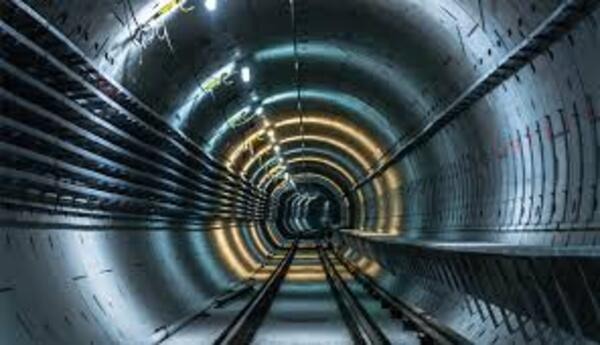
Bridging the Gap: How AI is Transforming Collaboration Between Estimators and Project Managers in Construction
In today's fast-paced construction industry, efficiency and accuracy are paramount to a project's success. The collaboration between estimators and project managers is critical for ensuring that projects stay on budget, meet deadlines, and align with client expectations. Traditionally, the gap between these two roles has been challenging to bridge due to the differences in focus: estimators concentrate on detailed cost analysis, while project managers oversee the execution of the project. However, AI-driven tools are revolutionizing the way these professionals collaborate, streamlining workflows, improving communication, and ultimately enhancing the success of construction projects.
In this article, we will explore how AI is transforming the relationship between estimators and project managers, making construction projects more efficient and effective. We’ll dive into the specific AI tools that are reshaping the industry and present real-world case studies that showcase the benefits of AI-powered collaboration.
The Role of Estimators and Project Managers in Construction
Before delving into AI’s transformative impact, it’s essential to understand the distinct yet complementary roles of estimators and project managers. Estimators are responsible for analyzing project plans and specifications to determine the cost of labor, materials, and equipment. They create detailed cost estimates that form the foundation of project budgets.
.webp)
On the other hand, project managers take these estimates and use them to oversee the planning, execution, and completion of the construction project. Their focus is on managing resources, schedules, and subcontractors to ensure that the project is completed on time and within budget.
While these two roles are crucial to a project’s success, they have historically faced communication challenges. Estimators often work in isolation during the preconstruction phase, while project managers are deeply involved once the construction begins. This division can lead to misalignment in expectations, unforeseen cost overruns, and delays.
How AI is Enhancing Collaboration
AI-driven tools are bridging the gap between estimators and project managers by fostering real-time collaboration, improving accuracy, and enhancing decision-making throughout the project lifecycle. Here’s how AI is transforming the collaboration process:
1. Real-Time Data Sharing
One of the most significant benefits of AI in construction is its ability to facilitate real-time data sharing between estimators and project managers. Cloud-based AI platforms allow both parties to access the same data simultaneously, ensuring that everyone is on the same page. This eliminates the risk of miscommunication and outdated information, enabling faster and more informed decision-making.
For example, if an estimator updates a cost estimate based on new information, the project manager can see the changes immediately and adjust the project plan accordingly. This level of transparency improves the accuracy of project forecasts and helps prevent costly surprises.
2. Automated Cost Estimation
AI-powered estimation tools are revolutionizing the accuracy and speed of cost estimation. By analyzing vast amounts of historical data, AI algorithms can predict costs with a higher degree of accuracy than manual methods. This not only saves time but also reduces the risk of human error.

For project managers, this means they can trust the estimates provided by AI tools and focus on managing the project’s execution. With more reliable cost estimates, project managers can make better decisions regarding resource allocation, scheduling, and risk management.
3. Enhanced Scheduling and Resource Management
AI-driven scheduling tools are helping project managers optimize timelines and resource allocation. By analyzing data from past projects, AI can predict potential delays and suggest adjustments to the project schedule. Estimators can collaborate with project managers to ensure that cost estimates align with the optimized schedule.
For example, if AI identifies a potential delay due to material shortages, the project manager can adjust the schedule while the estimator recalculates the cost impact. This level of collaboration ensures that both parties are working with the most accurate and up-to-date information.
4. Risk Mitigation
AI tools are also improving risk management in construction projects. By analyzing data from previous projects, AI can identify potential risks and suggest mitigation strategies. Estimators and project managers can work together to assess the financial impact of these risks and develop contingency plans.

For instance, if AI identifies a high likelihood of inclement weather delaying construction, the project manager can adjust the schedule, and the estimator can factor in the additional costs of delay mitigation measures. This proactive approach to risk management leads to fewer surprises and more successful project outcomes.
AI Tools Transforming Construction Collaboration
Several AI-powered tools are making a significant impact on the collaboration between estimators and project managers. Here are some of the most influential:
1. Procore’s Construction Platform
Procore’s AI-powered construction management platform provides a centralized hub for all project data, making it easier for estimators and project managers to collaborate. The platform offers real-time cost tracking, schedule management, and risk assessment tools, all powered by AI algorithms that analyze historical data to provide actionable insights.
2. BidLight
BidLight’s AI-driven estimation software streamlines the estimation process by automating quantity takeoffs and cost calculations. The software also integrates with project management tools, enabling seamless collaboration between estimators and project managers. BidLight’s AI algorithms analyze past projects to improve the accuracy of estimates, helping project managers make more informed decisions.
3. Smartvid
Smartvid uses AI to analyze job site photos and videos to identify potential safety risks. This information can be shared with both estimators and project managers to ensure that safety considerations are factored into both cost estimates and project schedules. By identifying risks early, AI helps prevent accidents and delays, leading to more successful projects.
4. PlanGrid
PlanGrid’s AI-powered construction management platform allows estimators and project managers to collaborate in real time by providing access to the latest project drawings, documents, and data. The platform’s AI algorithms analyze project data to identify potential issues before they become problems, helping to keep projects on track and within budget.
Case Studies: Real-World Examples of AI Bridging the Gap
Let’s explore some new real-world examples where AI-driven tools have significantly enhanced collaboration between estimators and project managers in construction projects:
Case Study 1: The Apple Park Campus with Autodesk BIM 360
.avif)
The construction of the Apple Park campus in Cupertino, California, presented a monumental challenge due to its sheer scale and the need for precision in every aspect of the project. The project team turned to Autodesk BIM 360, an AI-powered construction management platform, to ensure seamless collaboration between estimators and project managers.
The estimators used BIM 360 to generate detailed and accurate cost estimates based on 3D models of the campus. These estimates were shared in real time with project managers, who then used the data to plan and coordinate the construction phases. As the project progressed, AI-driven insights from BIM 360 helped the team anticipate potential delays and adjust the schedule accordingly. This real-time collaboration and data sharing ensured that the Apple Park campus was completed on time and within its extensive budget, highlighting the power of AI in managing large, complex construction projects.
Case Study 2: The Crossrail Project in London with Oracle Aconex

Crossrail, now known as the Elizabeth Line, is one of Europe’s largest infrastructure projects, aimed at improving transportation across London. Given the complexity and scale of the project, the Crossrail team leveraged Oracle Aconex, an AI-powered construction management platform, to enhance collaboration between estimators and project managers.
During the project, estimators used Aconex to generate detailed cost estimates for the various phases of construction, taking into account the unique challenges of tunneling and building underground stations in a busy metropolitan area. These estimates were then integrated into the project management tools, allowing project managers to adjust the schedule and allocate resources more effectively. The AI algorithms in Aconex helped identify potential risks, such as delays in material deliveries and disruptions due to city infrastructure. By addressing these issues proactively, the Crossrail project was able to stay on track and manage costs more effectively, demonstrating the critical role of AI in large infrastructure projects.
Case Study 3: The Marina Bay Sands Expansion with Trimble Connect
.avif)
The Marina Bay Sands expansion project in Singapore required meticulous planning and execution to add new hotel towers, retail spaces, and entertainment facilities to the iconic resort. The project team used Trimble Connect, an AI-driven construction management platform, to enhance collaboration between the estimation team and project managers.
Trimble Connect’s AI capabilities enabled estimators to create highly accurate cost models based on detailed 3D models of the expansion. These models were shared with project managers, who used the data to coordinate construction activities and manage subcontractors. The AI tools in Trimble Connect also helped the team predict potential scheduling conflicts and resource shortages, allowing them to make adjustments before issues arose. This proactive approach helped keep the Marina Bay Sands expansion on schedule and within budget, demonstrating how AI can optimize construction projects in the hospitality sector.
The Future of AI-Driven Collaboration in Construction
As AI technology continues to advance, we can expect even more powerful tools to enhance collaboration between estimators and project managers. AI-driven platforms will become more integrated, offering even greater insights and automation. For construction companies, this means increased efficiency, reduced costs, and more successful projects.
In the future, we may see AI tools that can predict project outcomes with incredible accuracy, based on vast amounts of historical data. These tools will help estimators and project managers make more informed decisions, leading to smoother project execution and fewer surprises.
Conclusion: Embracing AI for a Collaborative Future
AI is transforming the construction industry by bridging the gap between estimators and project managers. By enabling real-time data sharing, automating cost estimation, enhancing scheduling, and improving risk management, AI-driven tools are fostering better collaboration and improving project success.
For construction companies, embracing AI is not just about staying competitive—it’s about creating a more efficient, collaborative, and successful future. As the industry continues to evolve, AI will play an increasingly critical role in shaping the way projects are estimated, managed, and completed.
The case studies presented here demonstrate the real-world impact of AI on construction collaboration, and as AI technology continues to advance, we can expect even more transformative changes in the industry. For estimators and project managers alike, the future of construction is bright—and AI is lighting the way.
Check https://app.bidlight.com for how BidLight can help you estimate your project!